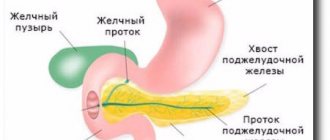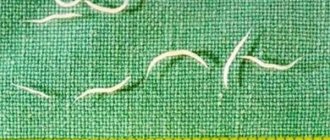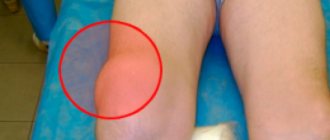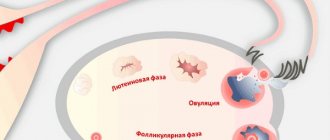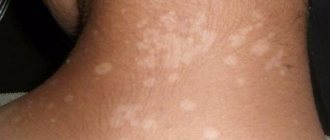Cholera affects 3-5 million people worldwide and causes 100,000-130,000 deaths annually. Due to severe dehydration, the mortality rate is especially high among children and infants.
Cholera
is an acute infectious disease caused by Vibrio cholerae. A soluble toxin produced by the bacterium in the gastrointestinal tract activates mucosal adenylate cyclase, causing active secretion of isotonic fluid, resulting in profuse watery diarrhea and excessive loss of fluid and electrolytes.
Vibrio cholerae was discovered in 1883. The discovery was made by the great German bacteriologist Robert Koch (1843-1910). When Koch was in Egypt, where the epidemic was taking place, he discovered bacteria in the intestines of people who died of cholera, but was unable to isolate them and infect animals with them.
Later in 1883, Koch traveled to India, where he wrote that he was able to isolate “a little bacillus that looks like a comma.” He found that bacteria flourished in wet dirty laundry, damp soil and in the stool of patients with the disease.
Vibrio cholerae bacteria naturally live in planktonic populations in brackish water. Attaching to microscopic crustaceans, they move. Colonies of bacteria can exist on the surface of the crustaceans and multiply when temperature, low salinity and high nutrient levels cause algal blooms in the estuary. This explains why cholera is traditionally associated with monsoon conditions.
Bacteria also exist in the form of biofilm colonies that cover the surfaces of not only water, but also plants, rocks, shells and other similar objects. They can take an inactive form and survive in the estuary mud.
Finally, the bacteria have been found in midge clutches, which serve as a reservoir for cholera bacteria. In all of these cases, the bacteria are natural inhabitants, unrelated to the disturbance of the ecology or the organisms with which they come into contact.
When Vibrio cholerae enters the human body, it can cause a serious epidemic. A toxic strain of Vibrio cholerae produces a poison that causes violent diarrhea in humans.
Bacteria thrive in water, especially when the water is filled with nutrients that stimulate their growth. Each infected person adds waste and bacteria to the environment, causing the disease to spread rapidly. Weather changes and improved sanitation can reduce the epidemic.
What are the symptoms of cholera?
Symptoms such as watery stools, vomiting, and leg cramps may appear between 6 hours and 5 days after exposure. Due to rapid fluid loss of up to 20 liters, a person may experience severe dehydration and shock.
Signs of dehydration include loss of skin elasticity, sunken eyes, fast heartbeat, low blood pressure and rapid weight loss. Shock in this case is the result of a violation of the circulatory system.
Symptoms
Cholera is an extremely dangerous disease that can cause severe, acute, watery diarrhea.
The time between ingestion of contaminated food or water and the onset of symptoms in the sick person ranges from 12 hours to 5 days2. Cholera affects both children and adults and can cause death within hours if left untreated. Most people infected with V. cholerae
, do not develop any symptoms, although for 1–10 days after infection, bacteria are present in their feces, which, when released back into the environment, can potentially infect other people.
Among people who develop symptoms, most cases have mild to moderate symptoms, while a minority of people who become ill develop acute watery diarrhea with severe dehydration. If left untreated, it can lead to death.
Pathogenesis
The entry gate of the pathogen is the digestive tract, into which cholera vibrios enter with infected food/water, where they partially die. Vibrios that have overcome the gastric barrier enter the small intestine, the alkaline environment of which promotes their reproduction and rapid colonization on the mucous membrane and in its lumen. Vibrios penetrate the membranes of enterocytes, where their adhesion occurs, after which the vibrios lose their mobility and, during the process of reproduction, form peculiar colonies in the form of plaques. The occurrence of cholera syndrome is caused by the release of toxic substances by vibrios: choleragen exotoxin and neuraminidase , which enhances the effect of choleragen. This toxin, penetrating the structure of cells, disrupts their metabolism, activates the synthesis of vasoactive intestinal peptide and the enzymes guanidine cyclase and adenyl cyclase .
As a consequence, the synthesis of cAMP (cyclic adenosine monophosphate) and (cGMP guanidine monophosphate) increases, which increases the intensity of the secretion process in the intestine, causing activation of the release of isotonic fluid into the intestinal lumen while simultaneously blocking the sodium pump with impaired reabsorption of fluid. Diarrhea occurs, and a little later vomiting occurs. The loss of isotonic fluid containing chlorine, sodium, and potassium ions is 15-20 liters or more, which is not typical for intestinal infections of other etiologies.
Accordingly, these phenomena cause rapidly developing isotonic dehydration , blood thickening, hypohydremia , hypergyroteinemia , electrolyte imbalance, which disrupts the blood supply to tissues and leads to acidosis , hypoxia and extrarenal azotemia. Against the background of such disorders, the patient may die due to the development of hypovolemic shock, thrombohemorrhagic syndrome, urination disorders, up to anuria or cholera coma . The stages of cholera pathogenesis are presented schematically in the diagram below.
Epidemiology, risk factors and disease burden
Transmission of cholera can be endemic or epidemic. A cholera endemic area is an area where confirmed cases of cholera have been detected within the last three years and there is evidence of local transmission of the disease (that is, cases have not been imported from elsewhere). A cholera outbreak/epidemic can occur in both endemic countries and in countries where cholera is not normally present. In cholera-endemic countries, an outbreak may be seasonal or sporadic and is defined as a greater than expected number of cases. In a country where cholera does not occur regularly, an outbreak is defined as the occurrence of at least one confirmed case of cholera with actual evidence of local transmission in an area where cholera is not typically absent.
Cholera transmission is closely linked to lack of adequate access to clean water and sanitation. Typical high-risk areas include urban slums where basic infrastructure is lacking, and camps for internally displaced persons or refugees where minimum needs for clean water and sanitation are not met.
The consequences of humanitarian crises, such as the destruction of water and sanitation systems or the displacement of populations into overcrowded and inadequately equipped camps, can increase the risk of cholera transmission when the bacteria is present or introduced. The corpses of people not infected with cholera have never caused epidemics.
The number of cholera cases reported to WHO over the past few years remains high. In 2017, 1,227,391 cases were reported in 34 countries, of which 5,654 were fatal3. The discrepancy between these figures and the estimated burden of disease is explained by the fact that many cases are not reported due to limited surveillance systems and concerns about the impact on trade and tourism.
Surveillance
Cholera surveillance should be conducted as part of an integrated disease surveillance system that includes local feedback and global information sharing.
Cases of cholera are identified based on clinical suspicion in patients with severe acute watery diarrhea. Further, the suspicion is confirmed by identifying the bacteria V. cholerae
in stool samples of corresponding patients. Case detection can be facilitated through the use of rapid diagnostic tests (RDTs), in which a positive test result on one or more samples triggers a cholera outbreak notification. Samples are sent to the laboratory for culture to confirm the diagnosis. Local capacity to detect (diagnosis) and monitor (collect, compile and analyze data) cholera incidence is central to ensuring an effective surveillance system and control response planning.
Countries adjacent to cholera-affected areas are encouraged to strengthen disease surveillance and improve national preparedness to quickly detect and respond to outbreaks should cholera spread across borders. Under the International Health Regulations, reporting of all cholera cases is no longer mandatory. However, public health events associated with cholera should always be assessed against the criteria in the Regulations to determine whether formal notification is necessary.
Classification
The classification is based on several characteristics.
According to the severity of clinical symptoms, they distinguish: typical, atypical, erased, subclinical and transient carriage of vibrio cholerae.
Clinical and pathogenetic classification:
- hypovolemic exotoxic form;
- normovolemic endotoxic form;
- exoendotoxic mixed form;
- normovolemic atoxic form;
- subclinical form.
Based on the severity of the course, mild, moderate and severe forms are distinguished.
Activities in the field of water supply and sanitation
The long-term solution to controlling cholera lies in economic development and universal access to safe drinking water and adequate sanitation. Action on the environment includes implementing tailored long-term water, sanitation and hygiene solutions to ensure that populations most at risk of cholera have access to safe water sources, basic sanitation and good hygiene practices. Such interventions prevent not only cholera, but also a wide range of other waterborne diseases, and contribute to achieving goals related to poverty, malnutrition and education. WASH solutions to control cholera are aligned with the Sustainable Development Goals (SDG 6).
Many of these activities require significant long-term investment and ongoing maintenance, making them difficult to finance and secure in least developed countries where such activities are most needed.
List of sources
- WHO Fact Sheet No. 107. June 2010
- Adamov A.K., Lomov Yu.M., Maleev V.V., Maramovich A.S., Medinsky G.M., Narkevich M.I., Podosinnikova L.S., Pokrovsky V.I., Uraleva V. S. Cholera in the USSR during the VII pandemic. M.: Medicine, 2000. 472 p.
- Onishchenko G. G., Belyaev E. N., Moskvitina E. A., Raikin V. I., Lomov Yu. M., Medinsky G. M. Cholera in Dagestan: past and present. Rostov-on-Don: “Polygraph”, 1995.
- Yushchuk N. D., Vengerov Yu. Ya. Lectures on infectious diseases. 3rd ed., revised. and additional M.: OJSC "Publishing House Medicine", 2007. 1032 p.
- Yushchuk N. D., Vengerov Yu. Ya. Infectious diseases. 2nd ed. M.: Publishing group "GEOTAR-Media", 2011. 692 p.
Treatment
Cholera is an easily curable disease. Most people can be treated successfully with prompt provision of oral rehydration salts (ORS). The WHO/UNICEF standard ORS packet is diluted in 1 liter (L) of clean water. Adult patients may require up to 6 L of ORS on the first day to treat moderate dehydration.
Patients with severe dehydration are at risk of dehydration shock and require urgent intravenous fluids. During treatment, an adult weighing 70 kg requires at least 7 L of intravenous fluids, as well as ORS. In addition, appropriate antibiotics are prescribed to these patients to shorten the duration of diarrhea, reduce the volume of rehydration fluids required, and reduce the amount and period of shedding of V. cholerae
in feces.
Massive use of antibiotics is not recommended as it has no proven effect on the spread of cholera and may contribute to increased antimicrobial resistance.
During a cholera outbreak, rapid access to treatment is key. Oral rehydration services should be available in communities, along with larger centers with intravenous infusion and 24-hour care. With timely and appropriate treatment, mortality should not exceed 1%. An important adjunctive therapy for children under five years of age is zinc supplementation, which also shortens the duration of diarrhea and may prevent further episodes of other causes of acute watery diarrhea. Breastfeeding should also be encouraged.
Diagnostics
Photo: estetic-clinic73.ru
Bacteriological diagnostics is the main method for identifying cholera vibrio; it also allows one to determine belonging to the serogroup and biovars. The results of the study can be obtained in 36-48 hours. For the bacteriological diagnostic method, the material for research can be feces, vomit, sectional material, the patient’s household items, and nearby bodies of water.
Faster diagnostic methods are also used. Accelerated and express methods include the immunofluorescence reaction (RIF), polymerase chain reaction (PCR), and vibrio immobilization reaction.
Immunofluorescence method. The purpose of this test is to bind a bacterial antigen to a fluorochrome-labeled antibody. Two substances most often act as fluorochromes: fluorescein isothiocyanate (FITC) and tetramethylrhodamine isocyanate, which give a green and orange glow, respectively, in ultraviolet light. The result can be obtained after 1.5 - 2 hours from the start of the study.
Vibrio immobilization reaction. Two drops of the test material are applied to a glass slide, a specific serum is added to the second drop, then they are covered with a glass slide. When examined with a phase-contrast microscope, characteristic movement is visible in the first control drop, and stationary agglutinates are formed in the second drop (with serum). A positive test result can be obtained in 1-2 minutes.
Increasing hygiene compliance and community mobilization
Health education campaigns tailored to local culture and beliefs should promote good hygiene practices, such as handwashing with soap, safe food preparation and storage, and safe disposal of children's feces. Funerals of people who have died from cholera should be organized in such a way as to avoid infection of those present.
In addition, during disease outbreaks, awareness campaigns should be organized and information provided to communities about the potential risks and symptoms of cholera, preventive measures to avoid infection, and where and when cases should be reported and, if symptoms occur, promptly seek medical help. Information about the location of appropriate health care points should also be disseminated. Public participation is key to long-term behavior change and successful cholera control.
Oral cholera vaccines
There are currently three oral cholera vaccines that have been prequalified by WHO: Dukoral®, Shanchol™ and Euvichol-Plus®.5 All three of these vaccines must be given in a two-dose regimen to provide full protection against the disease.4
Dukoral® is provided in a buffered solution, which requires 150 ml of pure water for preparation in adult patients. Dukoral® can be prescribed to all persons over two years of age. The interval between each dose should be at least seven days and no more than six weeks. Children between the ages of two and five should receive a third dose. Dukoral® is used mainly among travelers. Two doses of Dukoral® provide protection against cholera for two years.
Shanchol™ and Euvichol-Plus® are essentially the same vaccine produced by two different manufacturers. They do not require a buffered solution, making them easier to distribute to large numbers of people in emergency situations. They are provided to all persons over one year of age. The interval between each dose of these two vaccines should be at least two weeks. Two doses of Shanchol™ and Euvichol-Plus® provide protection against cholera for two years, and one dose provides short-term protection.
Shanchol™ and Euvichol-Plus® vaccines are currently being made available for mass vaccination campaigns from the Global Oral Cholera Vaccine Stockpile. This stockpile is supported by the GAVI Vaccine Alliance. Based on the available evidence, the WHO position paper on cholera vaccines released in August 2021 notes the following:
- oral cholera vaccines should be used in areas where cholera is endemic, in humanitarian crisis situations with a high risk of cholera incidence, and during cholera outbreaks; always in conjunction with infection prevention and control strategies;
- Vaccination should not disrupt other high-priority public health activities to control and prevent cholera outbreaks.
More than 30 million doses of oral cholera vaccines have been administered in mass vaccination campaigns. These campaigns were carried out in areas affected by disease outbreaks, in areas of increased vulnerability during humanitarian crises and among populations living in highly endemic areas known as “hot spots”.
- More information about cholera vaccines - in English
- WHO Position Paper on Oral Cholera Vaccines 2021 - English
WHO activities
In 2014, the Global Cholera Task Force, whose Secretariat is hosted by WHO, received renewed impetus to intensify its activities. The Global Task Force is a coalition of more than 50 partners involved in the global fight against cholera, including academic institutions, non-governmental organizations and United Nations agencies. Through the Global Cholera Task Force and with donor support, WHO is working in the following areas:
- supporting the development and implementation of global strategies to promote capacity-building for cholera prevention and control globally;
- providing a platform for technical knowledge exchange, coordination and collaboration on cholera-related issues to strengthen countries' capacity to prevent and control cholera;
- supporting countries to implement effective cholera control strategies and monitor progress;
- dissemination of technical guidelines and operational manuals;
- supporting the development of a research program focusing on evaluating innovative approaches to cholera prevention and control in affected countries;
- Raising awareness of cholera as an important global public health issue by disseminating information on cholera prevention and control and conducting advocacy and resource mobilization activities in support of cholera prevention and control at national, regional and global levels.
More information about the Global Cholera Task Force - in English
Eliminate cholera: a road map to 2030.
In October 2021, Global Task Force partners released the cholera strategy, End Cholera: A Roadmap to 2030. The global strategy was developed as a country initiative and aims to reduce cholera deaths by 90% by 2030 and eliminate it in at least 20 countries.
The global roadmap has three strategic priorities:
- early detection of outbreaks and rapid response to contain them. The strategy aims to contain outbreaks wherever they occur through a timely and rapid multisectoral response, including community engagement, strengthening surveillance and laboratory capacity, health and delivery system preparedness, and rapid response teams. ;
- a targeted multisectoral approach to prevent the re-emergence of cholera. As part of this strategy, countries and partners should pay particular attention to cholera “hot spots”—the relatively small areas most seriously affected by cholera. Cholera transmission in these areas can be stopped through measures to improve water supply, sanitation and hygiene and through the use of oral cholera vaccines;
- an effective mechanism for coordinating technical support, advocacy, resource mobilization and partnerships at local and global levels. The Global Task Force serves as a robust mechanism to assist countries in scaling up cholera control efforts by building on countries' multisectoral cholera control programs and supporting them with human, technical and financial resources.
In May 2021, the 71st World Health Assembly adopted a resolution promoting cholera control and endorsing the End Cholera: Global Roadmap to 2030. Eliminate Cholera: A Global Roadmap to 2030 - in English
How to avoid infection?
In the eighteenth century, doctors preached preventive measures such as sober living, fearlessness, or the desire to avoid waste. Treatment methods included bloodletting, heating pads and smoke enemas. Naturally, most patients with cholera died without receiving adequate treatment.
Today, cholera prevention includes:
- banal hand washing after visiting the toilet and before eating;
- prohibition to drink water from unknown sources.
Anti-epidemic measures should prevent further spread of the disease when a case of cholera is detected:
- isolation of the patient from others and treatment in the isolation ward of the infectious diseases department;
- five-day observation of people who had contact with the patient;
- carrying out prophylactic antibiotic treatment of all contacts;
- in the outbreak of cholera, disease prevention is carried out - an anti-cholera vaccine and toxoid are administered;
- in the event of an outbreak of infection, quarantine is introduced - restriction of exit and entry into a disadvantaged area;
- disinfection is carried out in the infectious focus.
We remind you: compliance with measures aimed at preventing the epidemic is controlled at the legislative level, so sick people who evade isolation and treatment bear legal responsibility!
Do not forget - cholera is easier to prevent than to treat, and, like all dangerous viral diseases, it spreads rapidly and is extremely dangerous. If you notice any symptoms of the disease, consult your doctor immediately. Be healthy!

